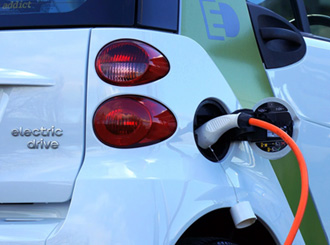
To everyone?s surprise, the ecological bonus granted to companies that buy or lease electric cars was simply abolished on 14/02/2024, without any prior announcement. A decision that is as radical as it is brutal, and one that may seem paradoxical given the challenges involved in decarbonising company car fleets.
So could this about-turn jeopardise the necessary energy transition of car fleets? At first glance, we might think that, yes, it could put a serious brake on the electrification of car fleets, which has been timidly initiated in recent years. However, a closer look at the situation suggests that the ongoing revolution will continue, with or without the bonus. We explain!
The abolition of the €3,000 ecological bonus for businesses and public authorities should not call into question the relevance of the energy transition. Aside from the obvious ecological impact, there are still many advantages to using electric vehicles, and prices are currently quite attractive.
The benefits of the energy transition for businesses

- Lower fuel costs
The use of electric vehicles helps to reduce fuel costs, which can represent significant savings for companies whose vehicle costs often account for 2% of total costs.ème expense item behind salaries. - Reduced maintenance costs
Electric vehicles require less maintenance than their internal combustion counterparts: no more oil changes, no more timing belts, less wear and tear on brake parts, etc. In use, maintaining an electric vehicle costs companies less. - Lower CO2 emissions
Electric vehicles produce no CO2 emissions, reducing the company's overall environmental impact. - A legal framework favourable to electricity
Legislation is evolving to support the energy transition, notably with the creation of Low Emission Zones (ZFE), which will gradually restrict the circulation of combustion-powered vehicles in certain traffic zones within metropolitan areas. In addition, the LOM law introduces new quotas to speed up the replacement of car fleets with greener, more environmentally-friendly models. So, from 1er From 1 January 2022, the LOM will require fleets of more than 100 vehicles to include a minimum of 10% of low CO2 emission vehicles (<60g CO2/km). From 2024, the required percentage of low-emission vehicles will be 20%, then 35% in 2027, then 50% from 2030.

So, has the abolition of the ecological bonus sounded the death knell for the energy migration of car fleets? In view of the various advantages that offset the loss of this financial boost, it's not as obvious as that.
But that's not really the point?
For company fleets, the major challenge is knowing which vehicles to electrify? Some companies have opted to electrify the vehicles of volunteers, while others have chosen to target specific professions within the organisation?
In reality, the only way to achieve a successful energy transition for a vehicle fleet is to have a thorough understanding of how each vehicle is used. Electrifying a vehicle that travels more than 500km a day makes no sense. Similarly, electrifying a vehicle without taking into account its recharging needs and capacities can be particularly risky and counter-productive.

In short, electrifiable vehicles will be those whose use is consistent with the operation of an electric vehicle. If they are used in a way that meets the requirements of an electric vehicle, then the savings will be there. To guide companies in their choices, there is only one option: the collection and analysis of data on usage.
How Optimum Data Mining can help you with your energy transition :
Optimum Data Mining offers a range of solutions for collecting and analysing data over a significant period of time, providing an accurate snapshot of the usage (distance, number of journeys, stopping times, etc.) of each vehicle. We can help you determine which vehicles are best suited to electrification, with precise recommendations on the charging infrastructure required (number, capacity and location of charging points needed).


